It's time to see the final point of NVIDIA's new RTX 50 wave with the RTX 5060, the manufacturer's most affordable graphics card. What's it worth? We've done the test for you.
We've had the opportunity to test everything from NVIDIA, from the most powerful graphics card they've ever created to the more gamer-oriented offerings. There was only one element missing: the RTX 5060, from the range more focused on creating a new configuration for less than 1000 euros than on the highest possible performance. The most successful model for its simple affordability. But is it an interesting model this year from NVIDIA? We took the measurements.
Price and availability
The RTX 5060 is sold in France at the recommended price of 319 euros. For context: this is a price 10 euros lower than the previous generation, which was released at 329 euros at the time, and which is in line with the last 5 generations of NVIDIA. Nothing really changes under the sun in short, even if the manufacturer promises for this launch that stocks at MSRP prices will hold.
| GeForce RTX 5060 | |
|---|---|
| GPU | Blackwell |
| Engraving | 4 nm |
| CUDA Cores | 3840 |
| RT FLOPS | 30 tflops |
| Tensors TOP | 614 AI TOPS |
| GDDR memory | 8 GB GDDR7 |
| Memory bus | 128 Bits |
Here we are testing the Asus DUAL model, which will be sold at MSRP. A Founder’s Edition model designed by NVIDIA will not be offered for sale. Note that the 5060 once again incorporates GDDR7 memory, a new technology that only the green team supports on this generation. Here is our test configuration for the RTX 5060: Here is our test configuration for the RTX 5060: MHz
Design, power consumption and heating
The Asus DUAL model we are testing will be sold at the MSRP price set by NVIDIA. This simply means that it is a very simple model in its construction, with a completely ordinary plastic chassis. Nothing bad about that, but don't expect to find LEDs everywhere on this one. The ventilation configuration is also very simplistic, with two fans at the front and an exhaust at the rear of the card. We are not on the same thermal design as the Founders Edition, but on the "safe values" so to speak.
At idle, the graphics card is impressive. While the temperatures of 43°C for the GPU and 54°C for the VRAM are already good, it's the consumption that makes us extremely happy: 6 watts. We know devices in standby that consume more than that. It's a great success on this point. At maximum consumption, we find temperatures of 70°C for the GPU and 68°C for the VRAM. These are a little higher than we expected, but still perfectly normal. GDDR7 has proven to be hot on this new NVIDIA generation, and the RTX 5060 is no exception, but the peak consumption of only 145W makes up for it.
In terms of connections, no problem: we find a simple classic 8-pin PCIe port. No need to invest in a modern power supply or worry about the durability of a modern connector.
Creative calculations and artificial intelligence
In photos, the RTX 5060 doesn't represent a particularly big evolution compared not only to the previous generation, but also to its competitors. In video, however, the difference is more than marked: performance is up 49% compared to the Arc B580, the best in this exercise and its most modern competitor. It's simply excellent.
In Blender, NVIDIA remains king, and the RTX 5060 represents a more modest evolution of 12% on Monster, 18% on Junkshop and 10% on Classroom. Nothing very exciting then.
In terms of artificial intelligence, the RTX 5060 is on par with the Arc B580 on float 32 calculations. Float 16 is back in its favor with 8% more performance compared to the B580, for a 15% improvement compared to the 4060. And in integers, the 5060 is unassailable with a 20% improvement from gen to gen. Stable Diffusion is also at its advantage, by 30% compared to the B580.
Measurements in 1440p and 1080p VS RTX 4060, RX 7600 XT 16 GB and Arc B580 12 GB
Theoretical measurements on Speed Way, specialized in ray-tracing, and Steel Nomad, specialized in pure rasterization, are very reassuring. Under Speed Way, the RTX 5060 remains largely superior with a 30% improvement in performance. And under Steel Nomad, where the Arc B580 impressed us, the RTX 5060 manages to equalize cleanly.
To test in real conditions, we used 9 titles:
- Alan Wake 2
- Baldur’s Gate 3
- Black Myth Wukong
- Cyberpunk 2077
- Flight Simulator 2024
- Hogwarts Legacy
- Horizon Forbidden West
- Marvel Rivals
- Ratchet and Clank Rift Apart
These games were selected for different reasons. Some, like Alan Wake 2, Black Myth Wukong, or Cyberpunk 2077, push even the most recent graphics cards to their limits. Others, like Marvel Rivals, are a good indicator for modern competitive gaming. But above all, all these titles are compatible with a large majority of technologies on both sides, DLSS and FSR. Note that for these comparisons, the lowest common denominator is chosen: if a game supports DLSS Frame Generation, but not FSR3 Frame Generation, then the measurements are made in simple DLSS/FSR for the same comparison base. Ray-tracing is always pushed to the limit, either in path tracing when available or similar.
Also read – Nvidia RTX 5080 test: its immense strength is DLSS 4
When possible, we will also compare the performance increases between the different DLSS/FSR/XeSS technologies. These scores unfortunately cannot be compared between solution X and solution Y, since they do not have the same impact on performance for the same visual rendering. Comparisons will therefore be made on a similar technology, while the results of other technologies are presented for information purposes only.
Alan Wake 2
On the 1080p definition, the RTX 5060 does not manage to take the lead, but to equalize with the RX 7600 XT which benefits from a larger memory pool. However, we can note a 26% increase in performance compared to the 4060. In Low RT, it is now the Arc B580 which equalizes with the RTX 5060, for 21% more performance on the previous generation. Path tracing is up 27% and remains NVIDIA's preserve, but still requires DLSS to work.
On the 1440p definition, the situation is essentially the same.
Baldur’s Gate 3
Still as nice, Baldur’s Gate 3 makes our lives easier. So we have three graphics cards that offer the same performance, and the RTX 5060 which offers 18% more performance regardless of the definition.
Black Myth Wukong
In 1080p resolution, Black Myth Wukong continues to give NVIDIA the edge with 25% more performance without ray tracing. With RT in Mid mode, it's 14% more performance. And in Path Tracing, we are at 11% although the game will again require DLSS to run properly.
Moving to 1440p, it is the RX 7600 XT that takes the lead by a small 7.5%. But in RT Mid, the RTX 5060 returns to the top of the pile with 18% more performance compared to the B580. Path tracing is simply not an option for anyone.
Cyberpunk 2077
In 1080p, the RTX 5060 gives us 32% more performance than the previous generation without RT, and remains 12% higher than the B580. In RT Mid, the increase is similar from gen to gen, but 17.5% higher than the B580. And path tracing remains essentially exclusive to NVIDIA cards currently with DLSS enabled.
On 1440p, the increases are always greater: 57% compared to the 4060 for 10% compared to the B580, +47% in RT Mid for 9% on the B580… but path tracing is completely unplayable, for no one.
Flight Simulator 2024
The 1080p definition gives the RTX the victory 5060 by 8% over the B580 and 21% over the 7600 XT. In 1440p, however, and despite the nice 21% improvement over the 4060, the B580 remains 7% higher.
Hogwarts Legacy
In 1080p definition, the RTX 5060 wins by 15% over the 7600 XT without ray-tracing, with a 21% performance improvement from gen to gen. The RT Mid shows here the most beautiful evolution of 39% compared to the 4060, with a difference of 9% on the B580. And in RT Extreme, the 5060 finally exceeds 30 FPS native.
When we go to 1440p, the evolution is less notable. Without ray-tracing, it is only 12% more than the 4060 with a difference of 9% on the B580. The RT Mid finally becomes playable, but remains below the performance of the B580 by 10%. RT Extreme is only really playable with the 7600 XT's 16GB of RAM, if you go through the FSR that is.
Horizon Forbidden West
In 1080p, we find equal performance with the B580 for an evolution of 13.6% from gen to gen. At 1440p, the tie is still there for a 21% performance increase compared to the 4060.
Marvel Rivals
The 1080p definition gives the RTX 5060 equal to the Intel Arc B580 for 11% more performance compared to the 4060. But at 1440p, the RTX 5060 takes the lead by 10% for a 16% increase.
Ratchet and Clank Rift Apart
In 1080p, without ray-tracing, the Intel Arc B580 remains slightly superior by 13%, while the 5060 takes 16% more performance compared to the 4060. Once ray-tracing is activated, the RTX 5060 finally takes first place with 40% more performance from gen to gen for 7.5% compared to its rival the B580.
The 1440p definition still leaves room for the duel against the B580, with a victory for this last by 16% without ray-tracing despite the 7.5% evolution. With ray-tracing, we are 7% less than the B580 while the 5060 has not really evolved compared to the previous generation.


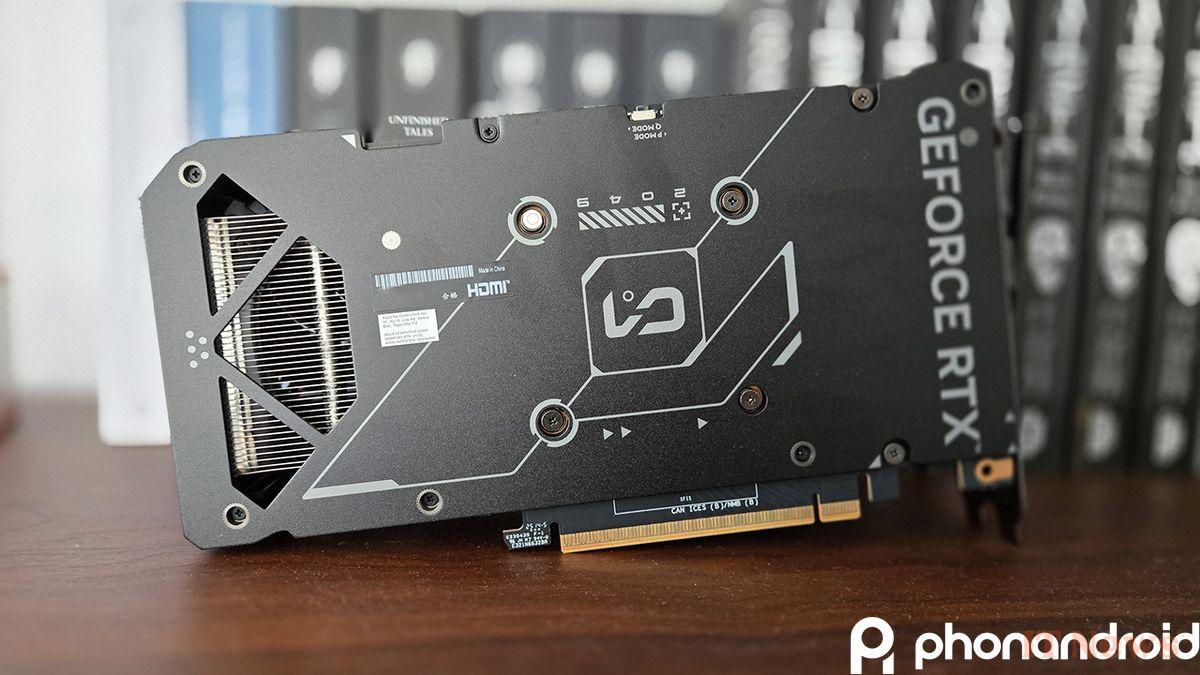
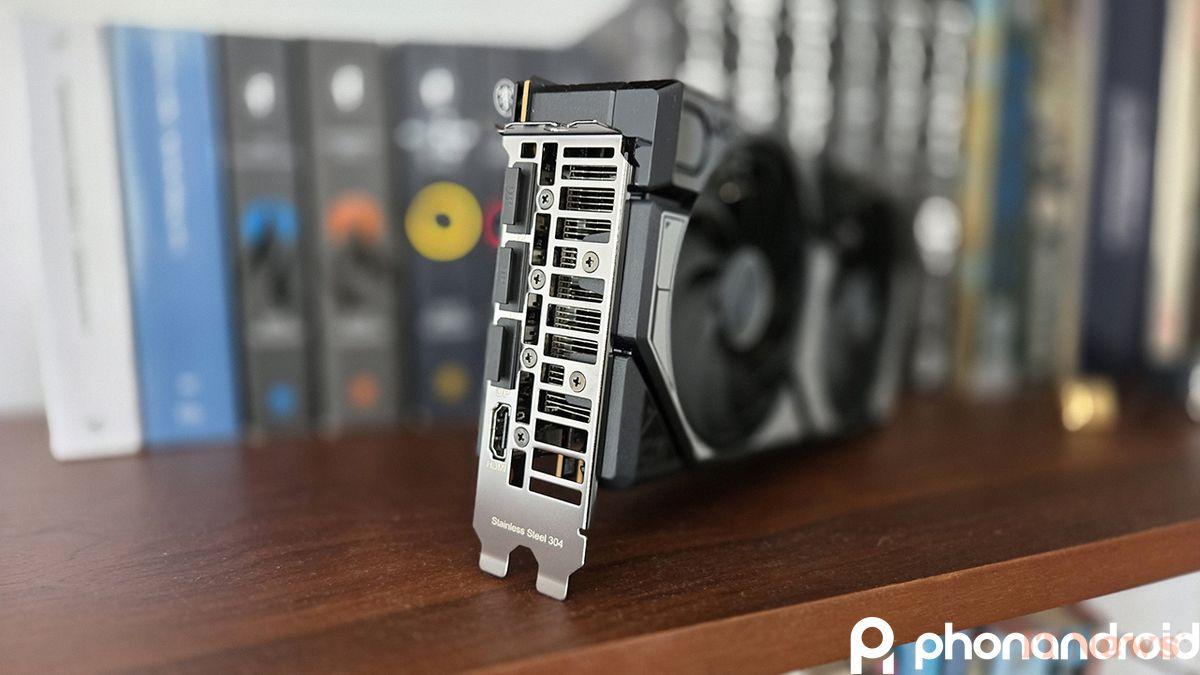
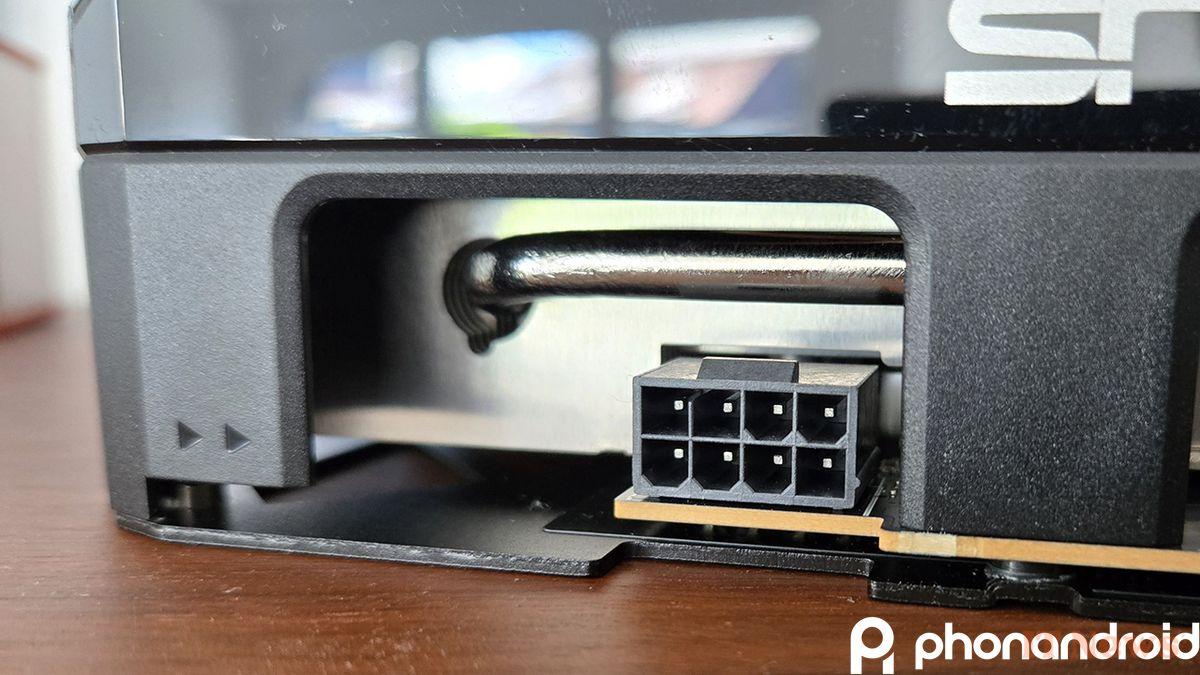
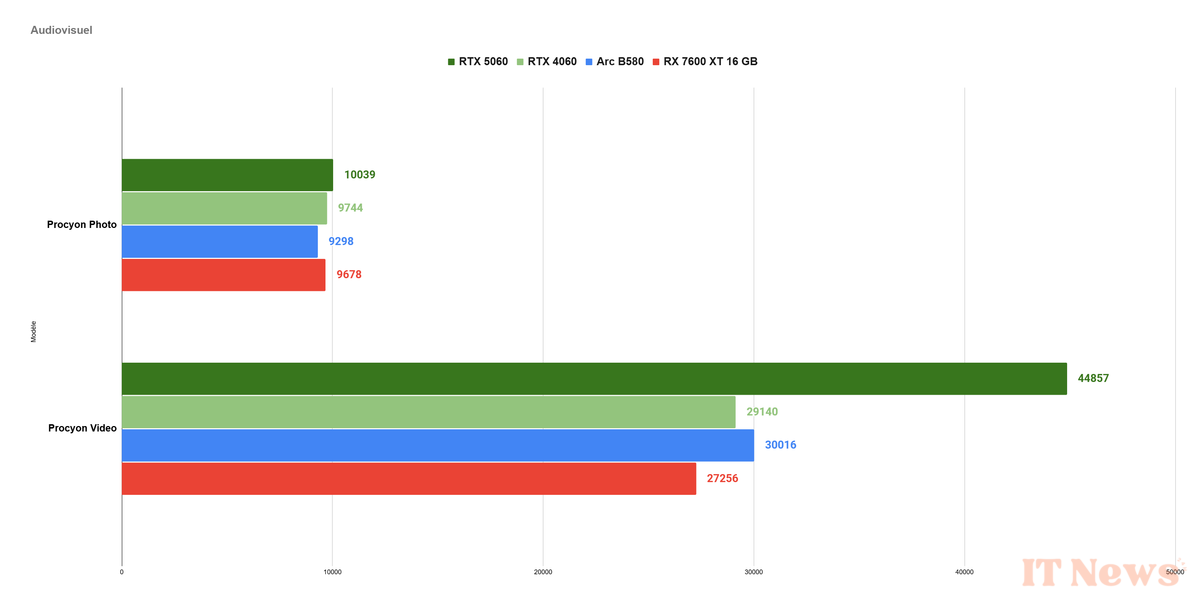
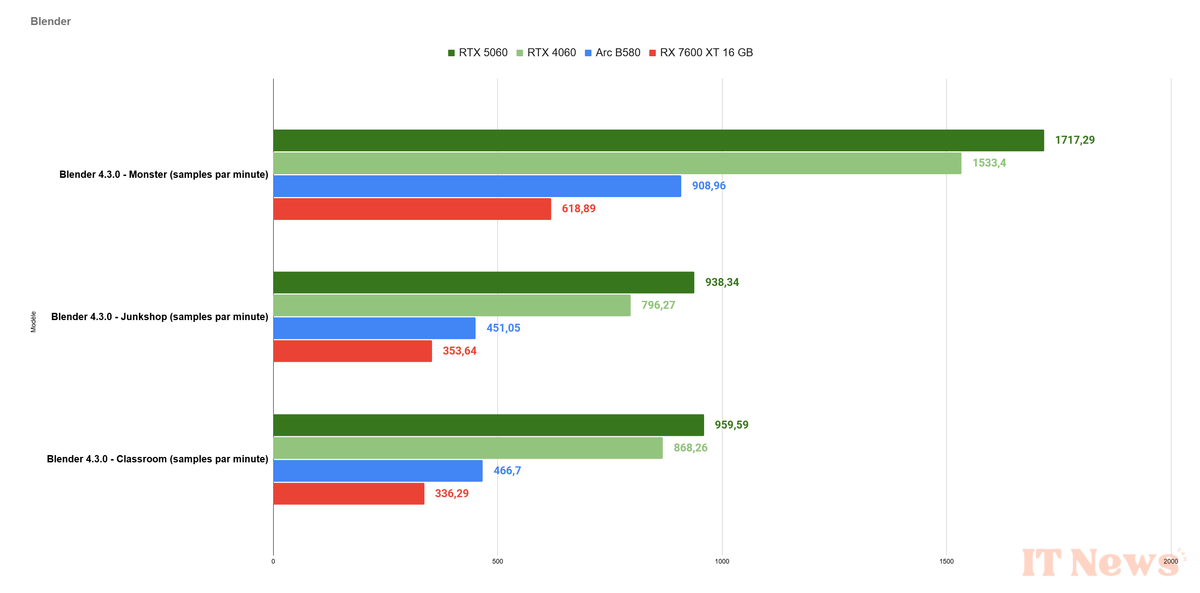
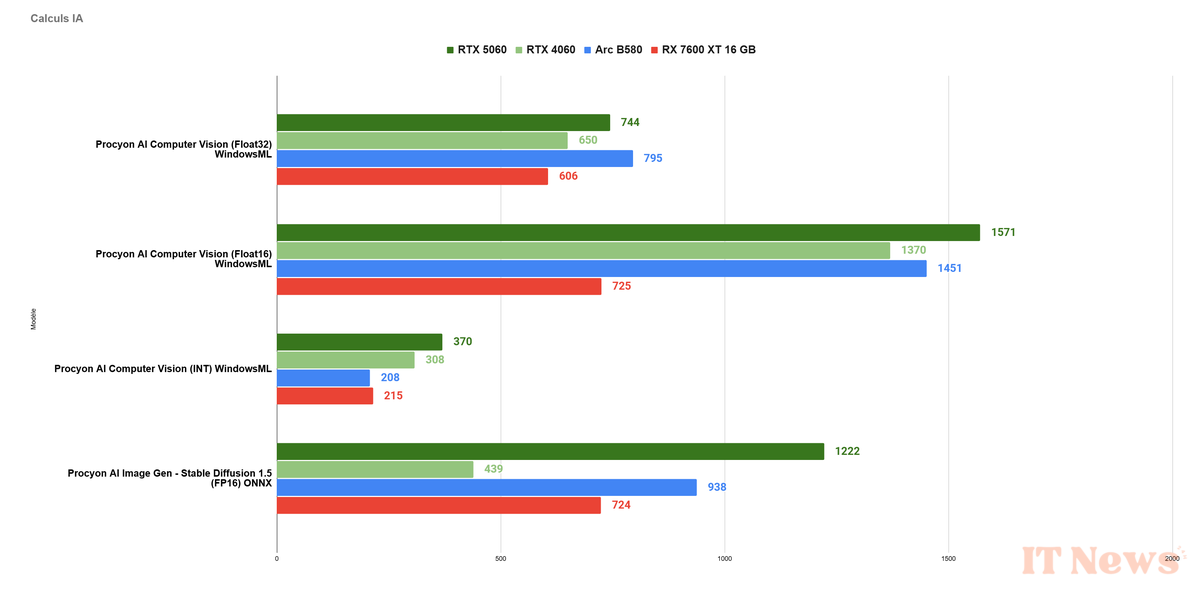
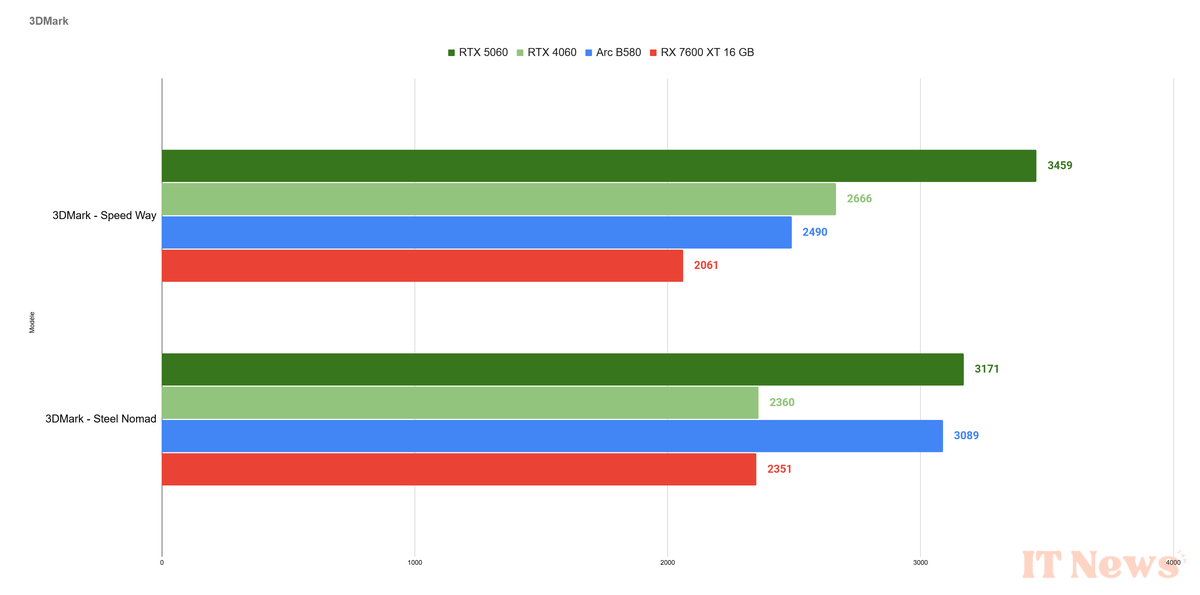
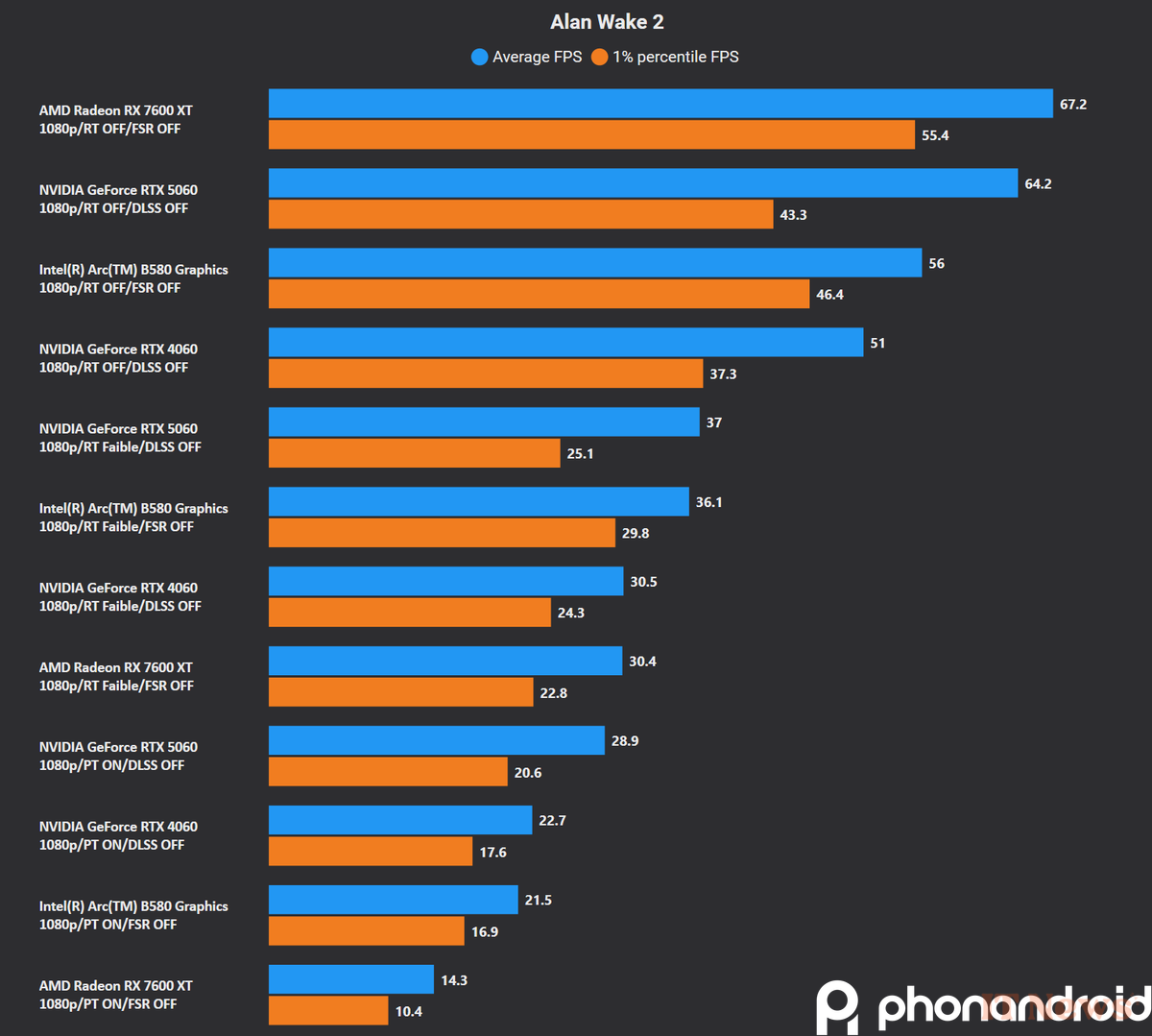

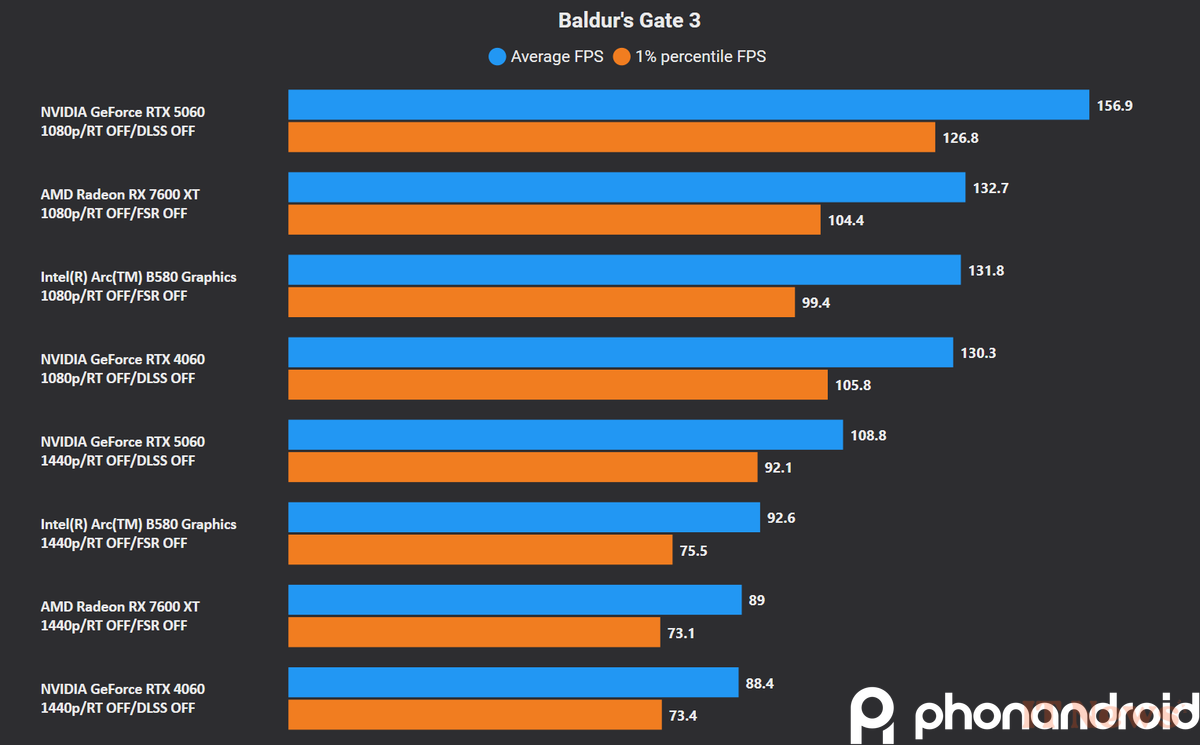
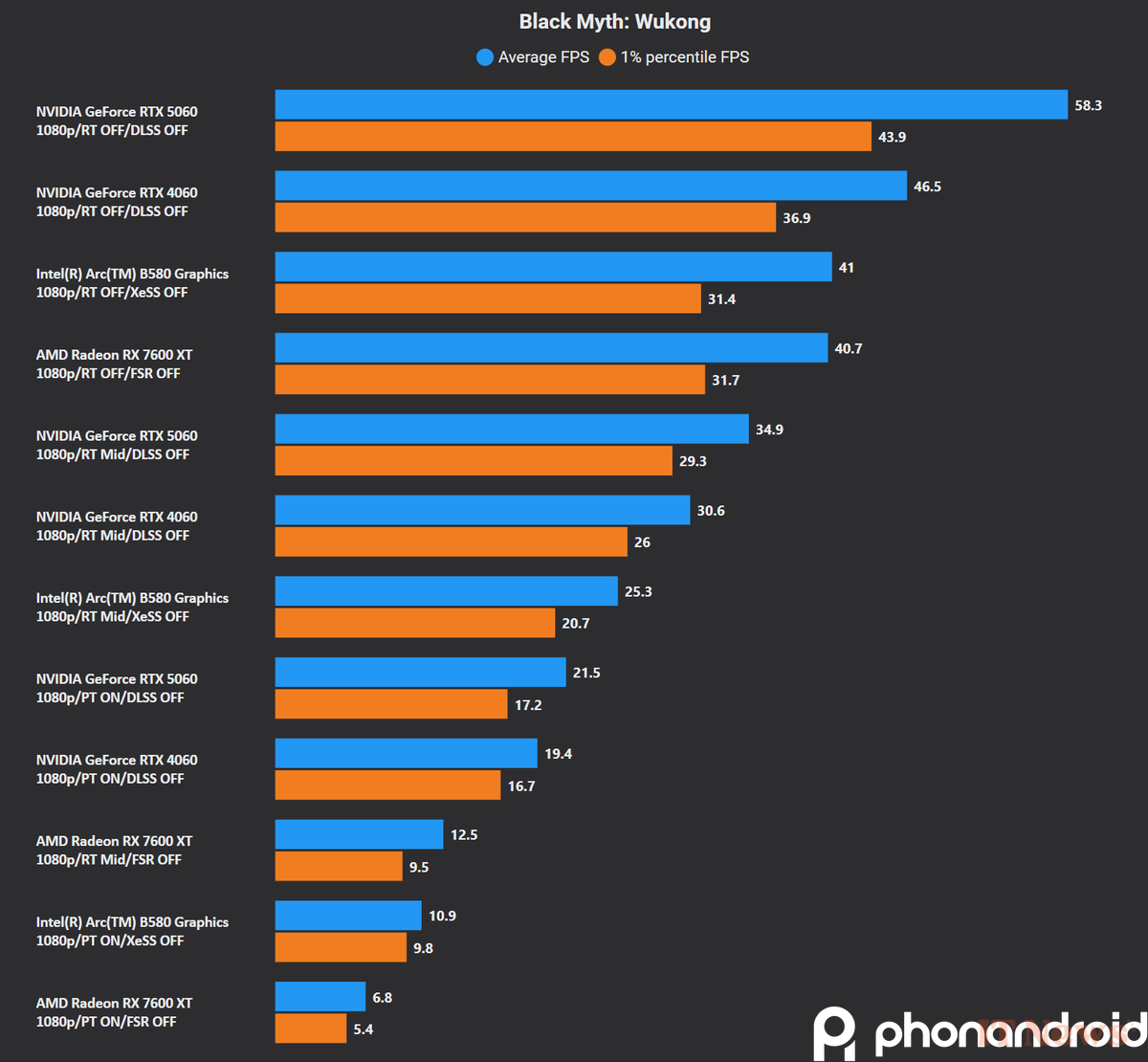
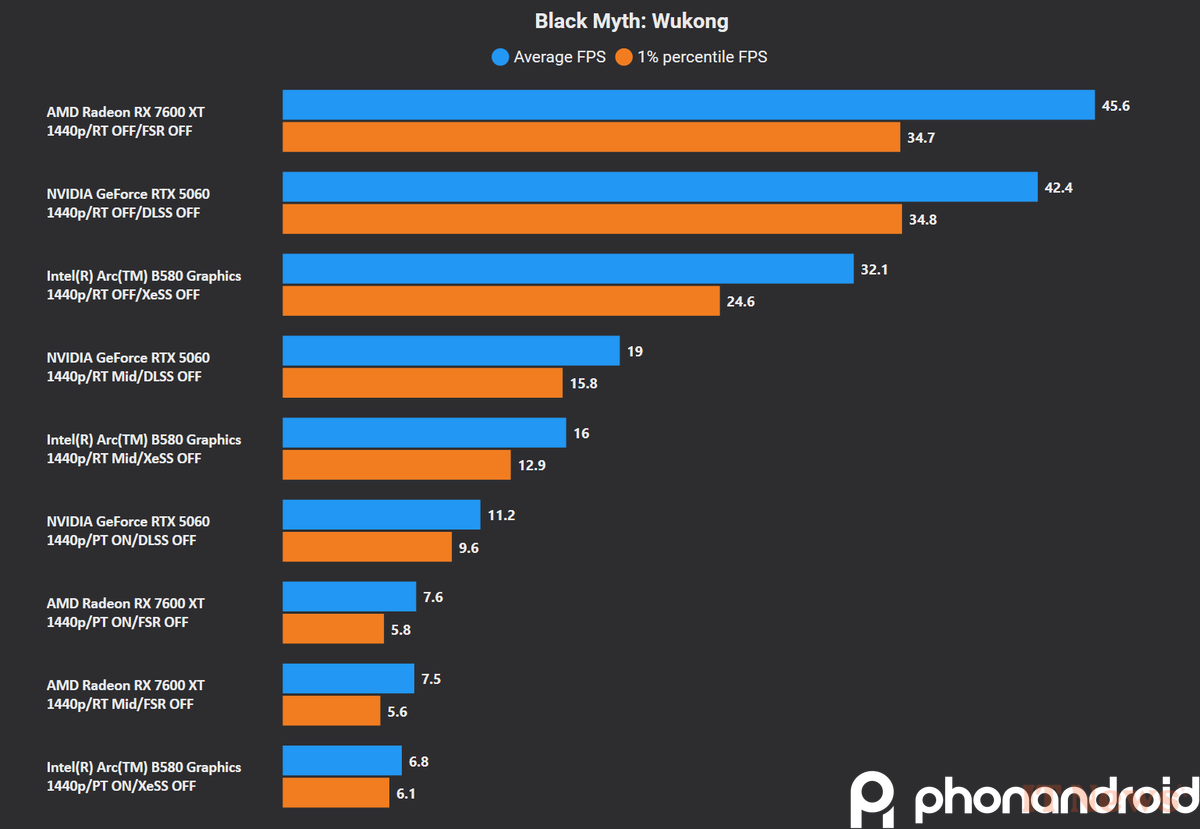
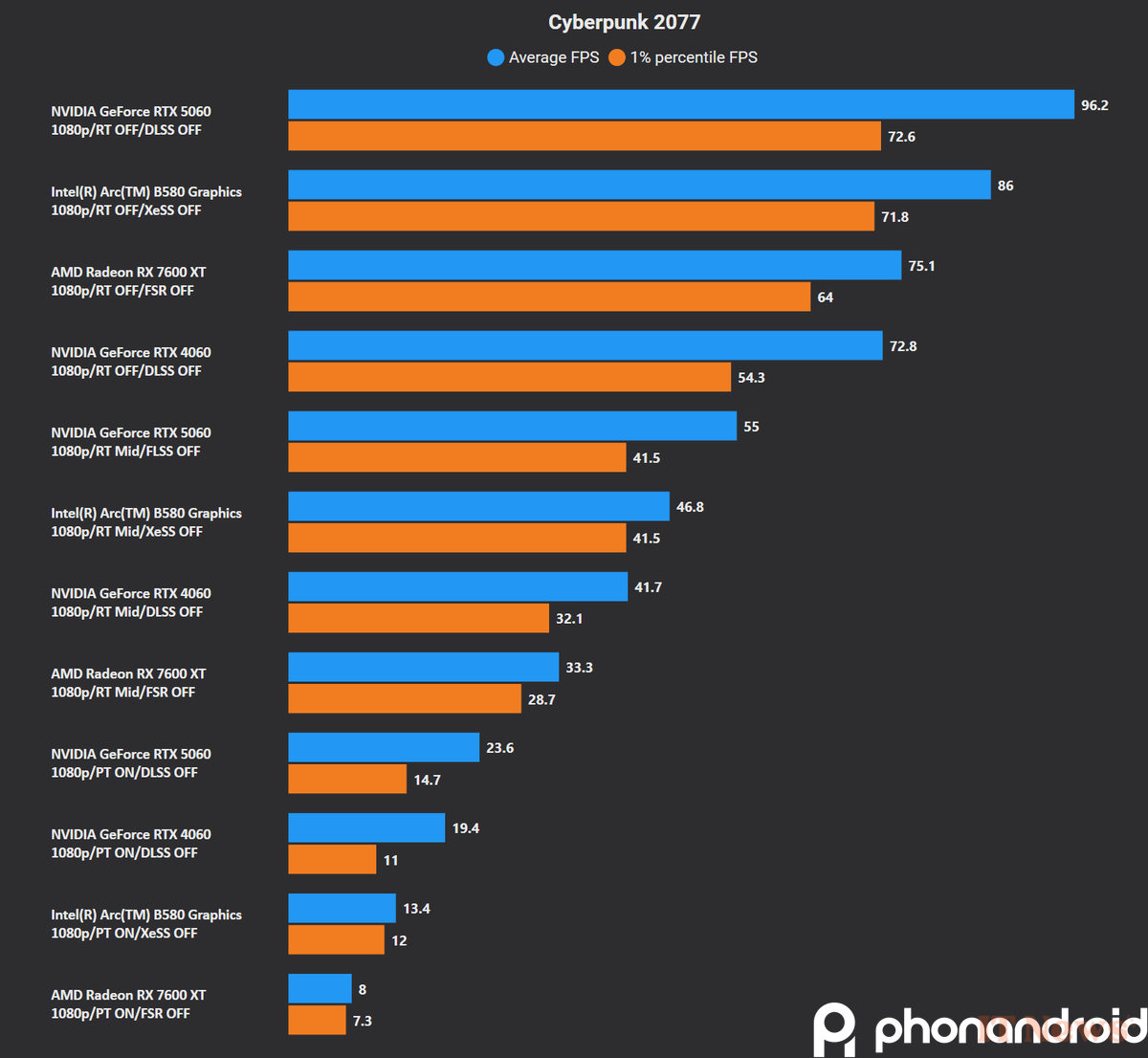
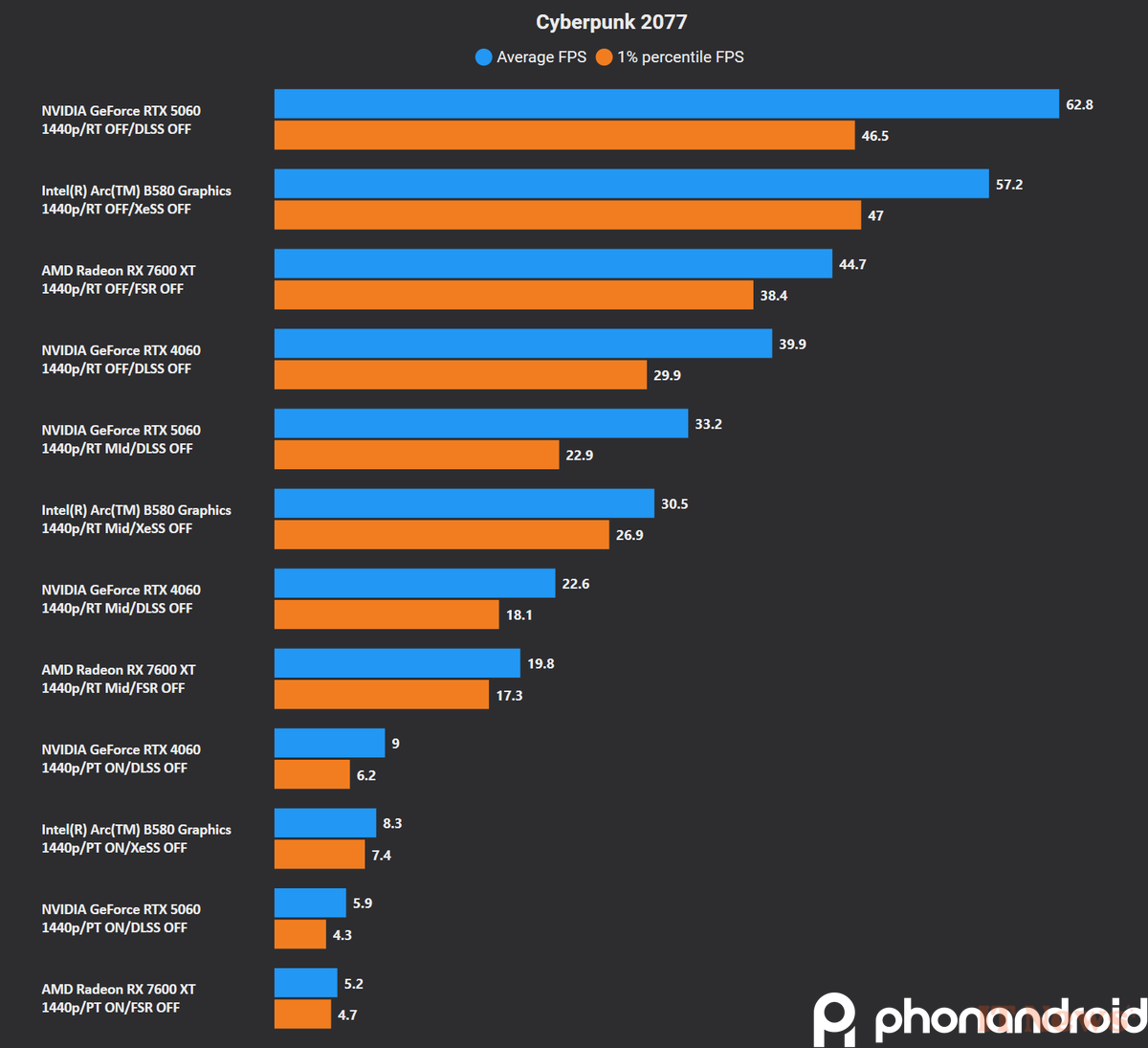

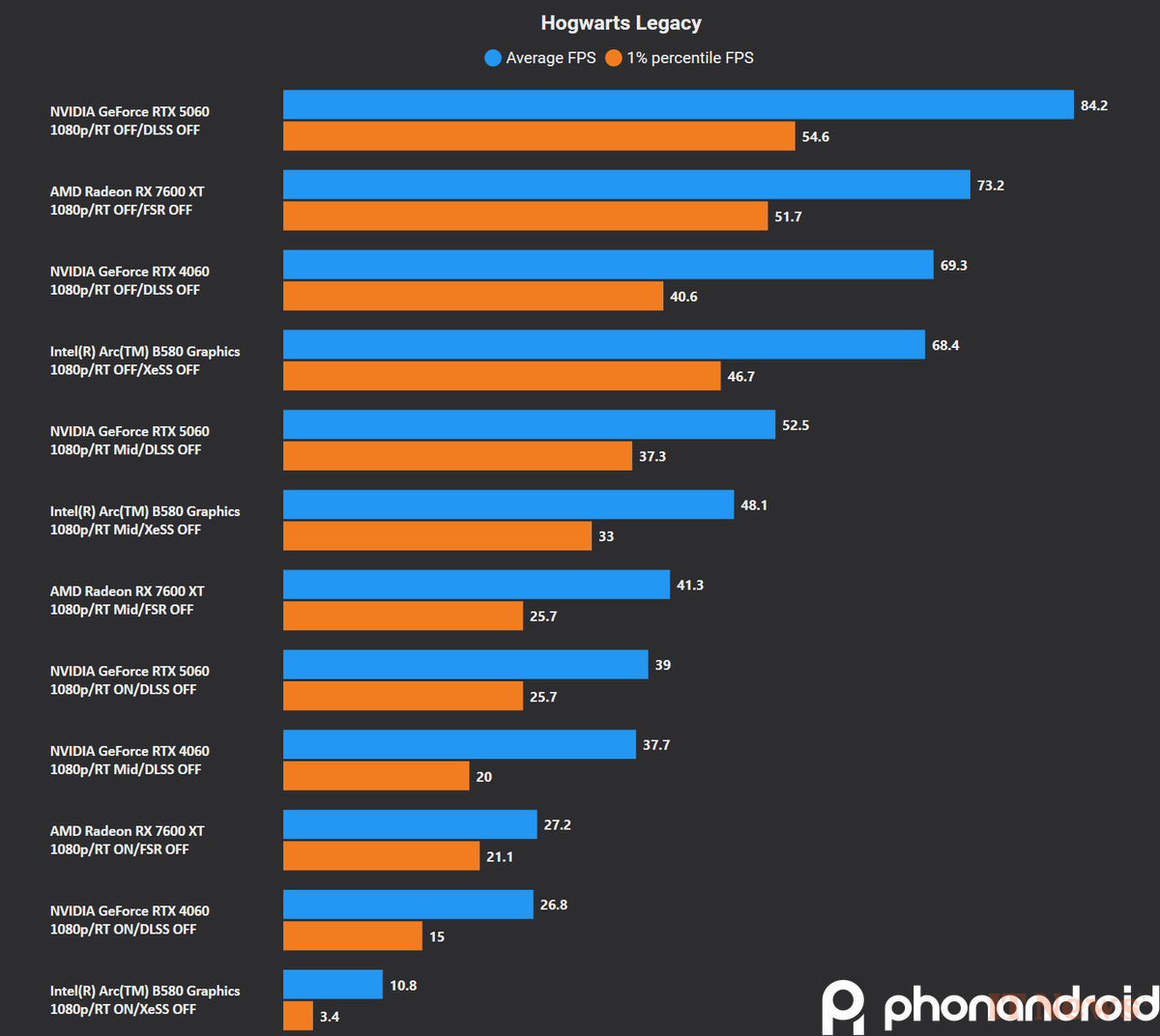
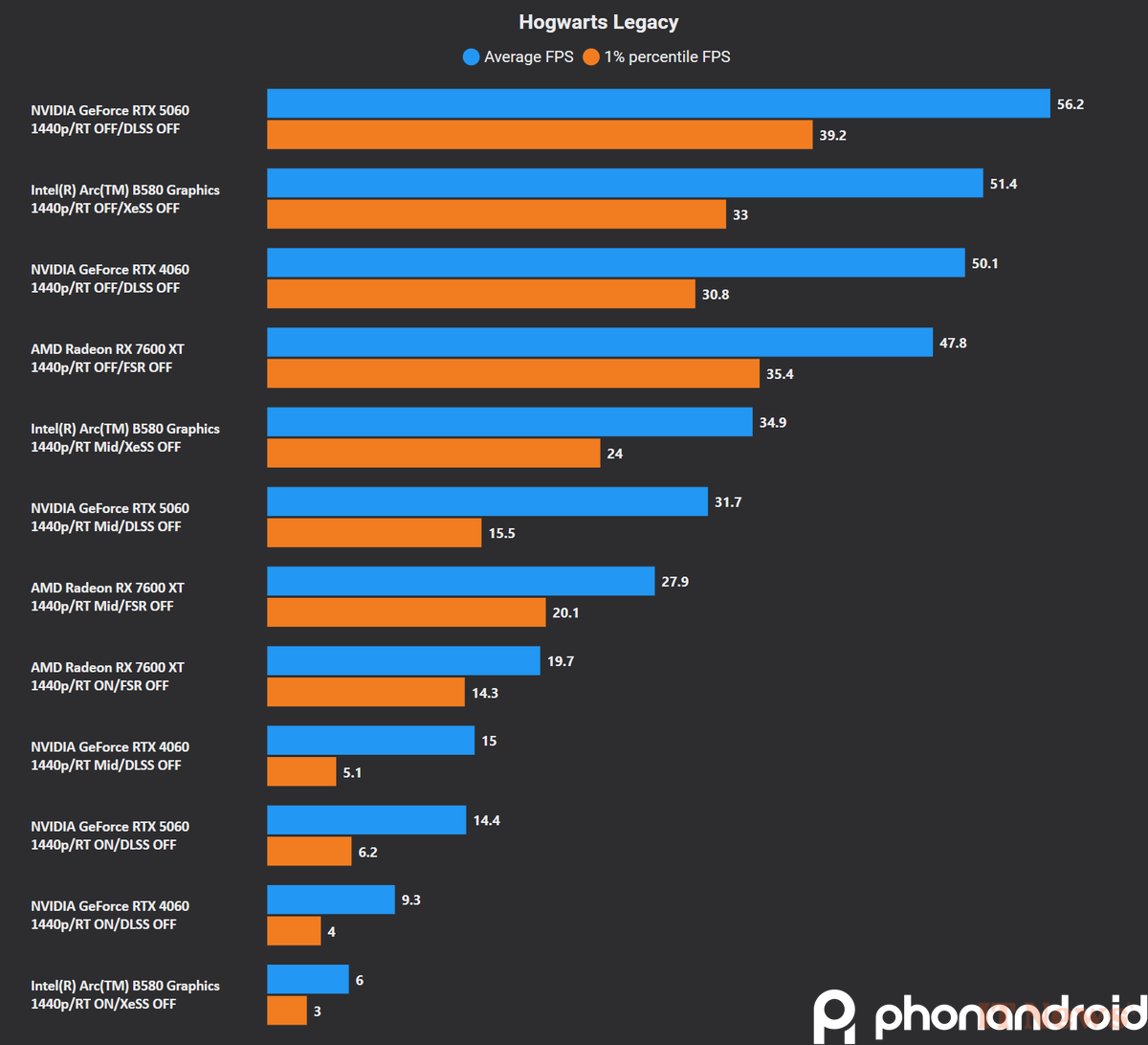
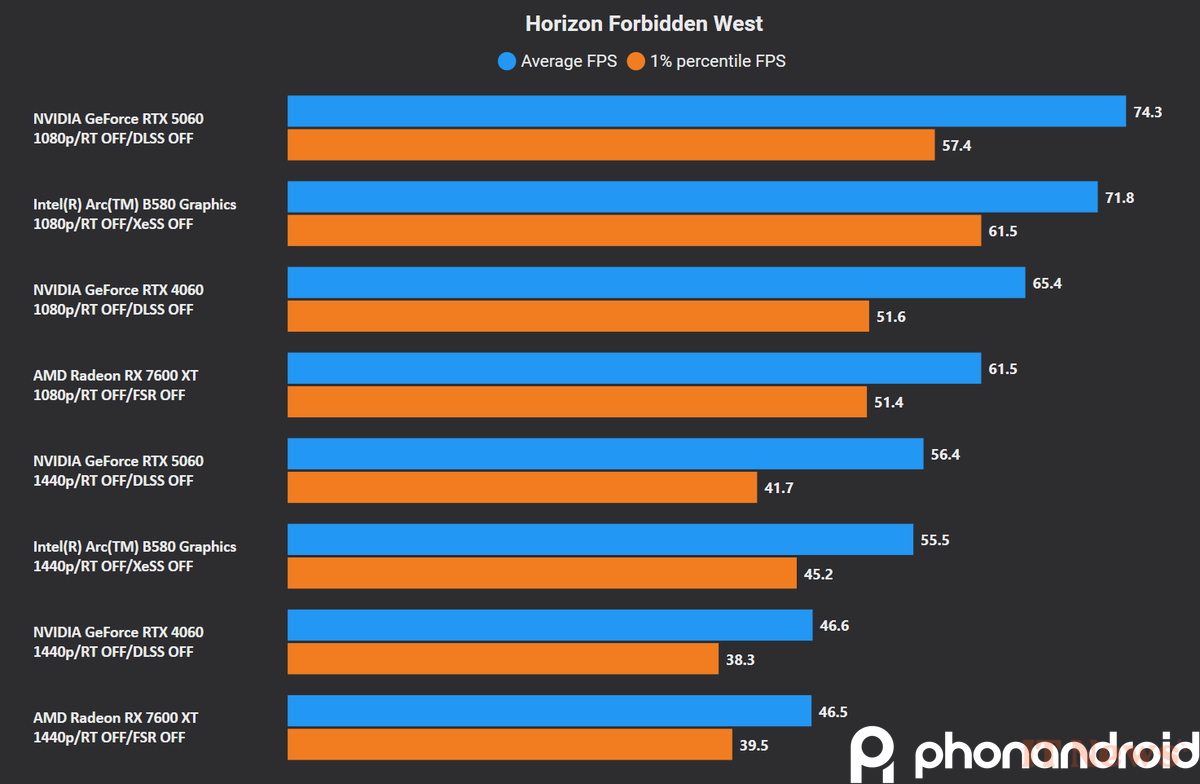


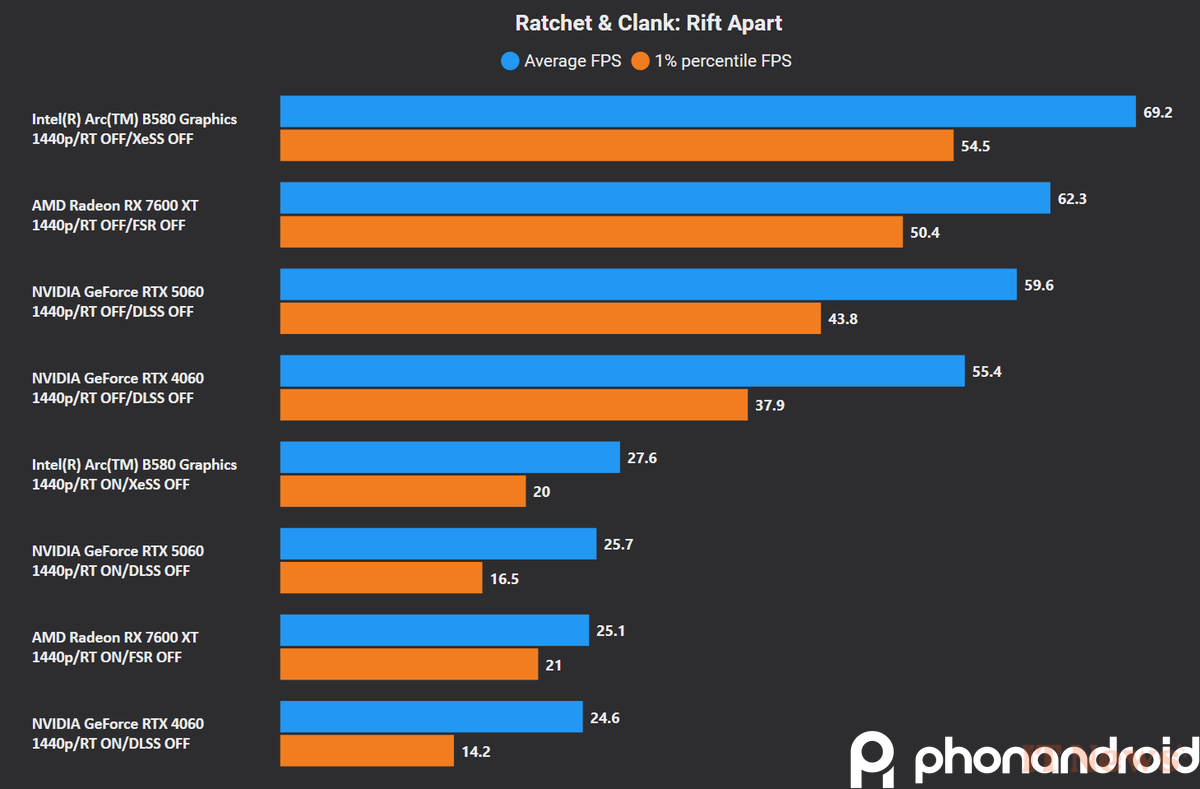

0 Comments